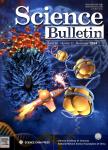Periodic DFT approaches to crystalline alkali metal azides
Periodic DFT approaches to crystalline alkali metal azides作者机构:Nanjing Univ Sci & Technol Dept Chem Nanjing 210094 Peoples R China
出 版 物:《Chinese Science Bulletin》 (中国科学通报)
年 卷 期:2002年第47卷第14期
页 面:1180-1183页
核心收录:
学科分类:081704[工学-应用化学] 07[理学] 070304[理学-物理化学(含∶化学物理)] 08[工学] 0817[工学-化学工程与技术] 0703[理学-化学]
基 金:This work was supported by the National Natural Science Foundation of China (Grant No. 20173028) the Postdoctoral Foundation of Chinese Ministry of Education
主 题:crystalline alkali metal azides DFT band structure electronic structure.
摘 要:The energy bands, electronic structures and relationship between structures and properties of the crystalline alkali metal azides, LiN3, α-NaN3 and KN3, are investigated at the DFT-B3LYP level. The crystalline bulks are predicted to be insulator, speculated from their band gaps of ca. 0.23-0.25 a.u. and from their level frontier bands. The atomic overlaps and electron densities show that the metals and the azides are combined by ionic bonds. The crystal lattice energies, being corrected for the basis set superposition errors, are -852.30, -771.45 and - 614.78 kJ·mol-1 for LiN3, a-NaN3 and KN3 respectively. These values are similar to those by Gray’s approximate method. The frontier crystal orbital mainly consists of the atomic orbital of the terminal nitrogen of azides. The contribution of the metallic orbital to the LUMO is very small. The electron transition from the HOMO to the LUMO is difficult to occur. Hence all the alkali metal azides are expected to be insensitive explosives, according to the



